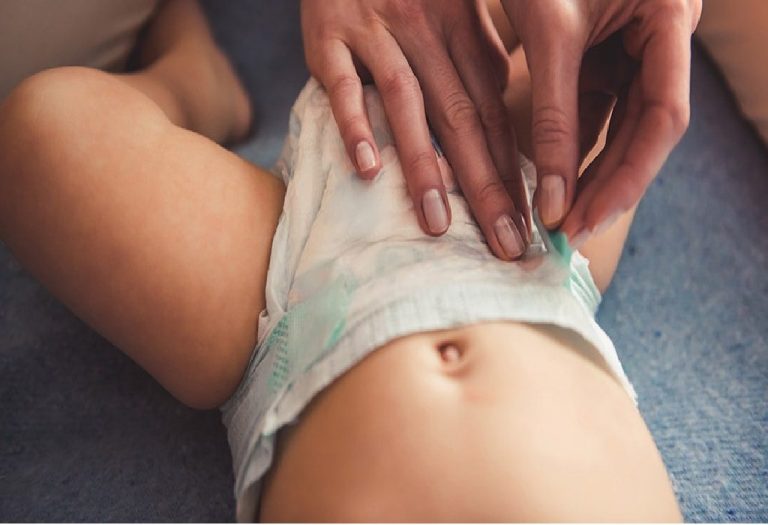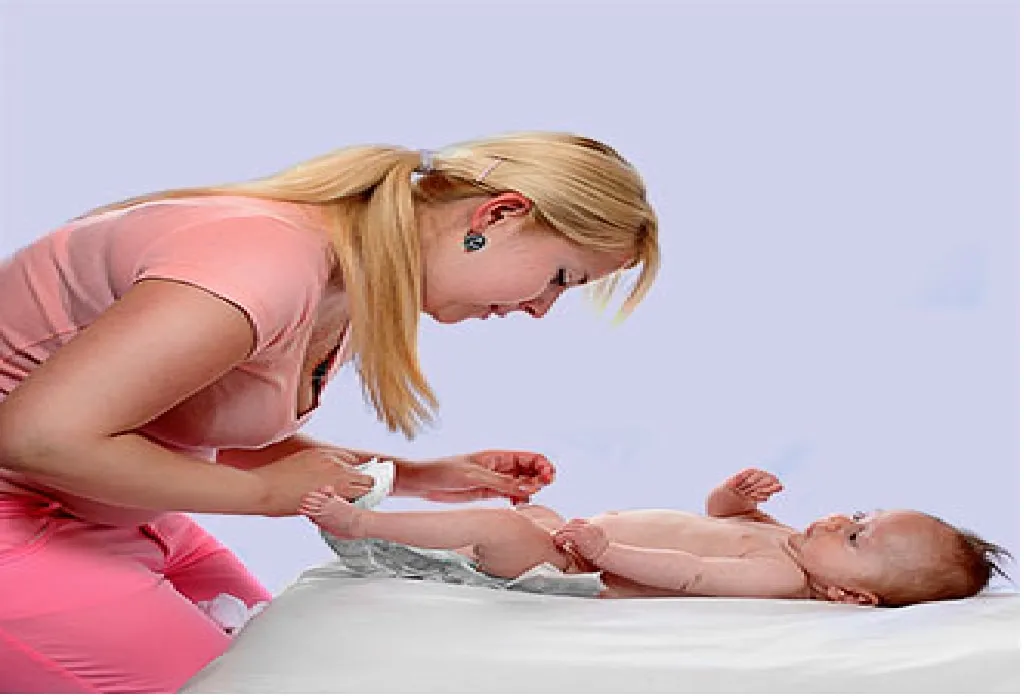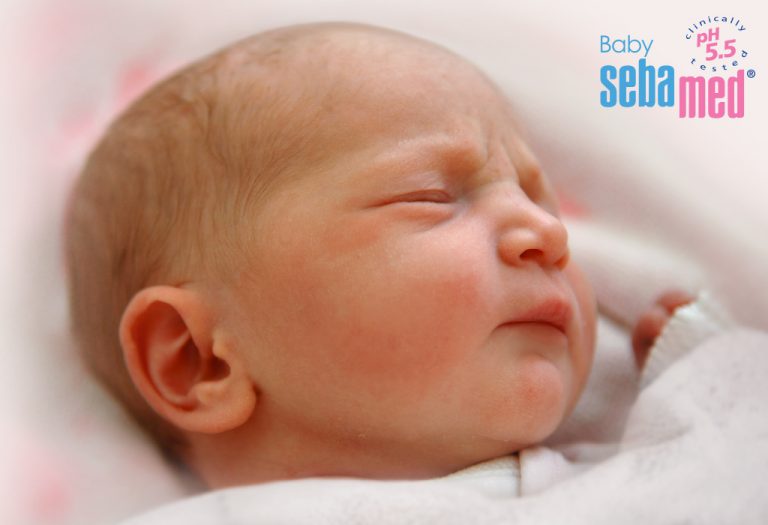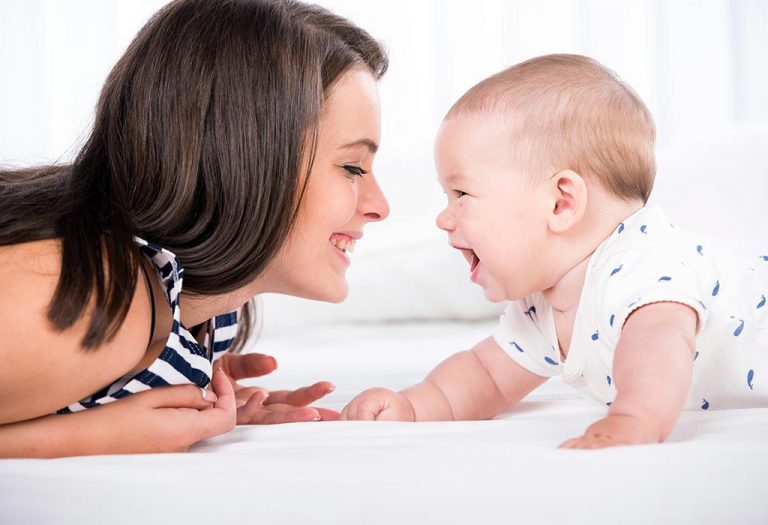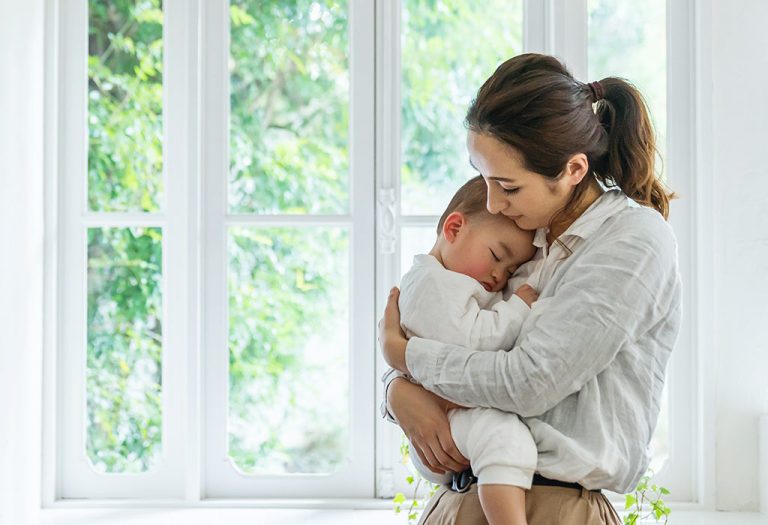7 Abnormal Signs In Baby’s Pee & Poop
As a mother to a little baby, a lot of your time will be spend n cleaning your baby’s poo and wee. Your baby’s poo and wee are determined by several factors including what he eats, what you eat if you are still feeding him, and his overall health. An abnormality indicates there is something wrong with your baby’s health that needs immediate attention from the paediatrician.
Once you become a mother, there is one thing that can keep you awake through the nights even as your little one sleeps peacefully. And that is – whether your baby is having good bowel movements and peeing properly or not! Peeing and pooping is an endless cycle – babies eat, drink, sleep, and wee and poo – that’s all they do all day long, each day! While lots of wet nappies keep you on your toes throughout the night, they serve as the best indicator that your baby is healthy and doing well.
Please examine your baby’s pee and poop for these warning signs. If you spot any of these signs, it can indicate there is something wrong with your baby’s health.
Signs That Your Baby’s Poo and Wee Are NOT Normal
1. Not Wetting at Least 6 Diapers in a Day
Ample poo and wee is a sign of good health in babies. A newborn peeing a lot means he is getting enough fluids and digesting his food well. As your baby grows older, the frequency will reduce. However, after the first few days of birth and for at least 6 months, babies should be wetting 6-8 diapers every day. Typically, babies who are breastfed have at least 6 to 8 wet diapers every day. Babies who are formula-fed may have up to 10 wet diapers too.
If your baby does not have at least 6 wet diapers daily, it could be a sign of dehydration. You need to contact your paediatrician.
2. Dark-Coloured Pee
When your baby is on breast-feed, her wee should be transparent white in color and non-smelly. Slowly and steadily, as you introduce semi-solids and solids into her food, the wee changes colour to a yellow shade and emanates slight smell. However, if the wee appears slightly darkish shade in shade, your baby could be dehydrated. If this is when she is on your feed, it means you are consuming less water which is impacting your little one.
Please make sure you drink ample water at regular intervals. If you have started your baby on solids, give him little sips of water frequently until you feel the colour has become normal. Remember, water shouldn’t be fed to babies younger than 6 months old without a doctor’s consultation.
3. Slightly Reddish or Brownish Wee
It is not necessarily abnormal if your baby’s urine looks non-yellow in colour. This may be the result of something you or your baby may have eaten during the day. The excess is probably being thrown out through the urine. However, if you do not see the colour reverting to normal within two-three rounds of wee, it can mean a problem.
Red discolouration of the urine may also be due to blood in the urine, while pale yellow pee could indicate jaundice. These are the alarm bells you must watch out for. Do not delay in visiting your doctor for consultation if you see these signs.
4. Abnormal Coloured Poo During Breastfeeding
The colour of the poo, the consistency, the frequency and the smell – all these become a matter of national emergency for any new mother! From blackish green poo at birth to the mustard liquid poo during breastfeeds to, finally, the yellowish firm poo that runs once she starts growing – these are the various phases in the life span of baby poo. During breastfeeding, your baby’s poo is usually mustard-shaded and watery. Any change in this means that the mother’s health is not good. For example, the mother isn’t getting ample liquid or is feeding her baby on an empty stomach. This needs to be evaluated by the paediatrician who will be able to recommend dietary changes in the mother’s diet.
5. Bad Smelling Pee
Many moms notice that their breastfed baby’s urine smells strong. If your baby’s pee smells very strong and foul, it can be a sign of a urinary tract infection. Bacteria can easily enter your baby’s urinary tract, especially from the skin around his anus. This can lead to an infection in his urinary tract and surrounding region. As a preventive measure, use anti-bacterial baby wipes to clean the genital area properly. Also track your baby’s urine to see if it looks cloudy and contains blood. UTI can be difficult to track in babies; sometimes, fever and vomiting can also be giveaways that something is wrong with the child. Consult your doctor to seek proper treatment for this condition.
6. Abnormal Poo after Introducing Solids
Once solids are introduced, anything other than the normal poo signifies trouble in paradise. It may be excessive spice or salt, lack of water, or indigestion caused by the new food. Your baby may also face diarrhoea, which means poo going out in watery form. If these signs have started showing up after you weaned your baby into a solid diet, it is possible that he is not reacting to the new meal regimen properly. Consider switching to some of these paediatrician-approved solid foods for babies.
7. Pain or Crying While Peeing/Pooping
This is a definite alarm bell both for babies and older children; your baby should never feel pain when urinating. If you notice that your baby cries out or shows signs of pain when peeing, it can be a sign of a urinary tract infection. If your baby is experiencing pain while pooping and has to put in a lot of effort, it can indicate constipation. Also, be on your guard if you see blood-spotting in stools. Pain or crankiness while peeing and pooping is never a safe sign!
FAQs
1. Can my baby’s poop indicate allergies?
Yes, your baby’s poop can sometimes indicate an allergy, particularly if there are noticeable changes. Signs to watch for include mucus in the stool, blood streaks, or a significant shift in color and consistency. Babies with allergies, particularly to proteins in cow’s milk or soy, might show these symptoms. Additionally, persistent diarrhea or constipation can be an indication. If you suspect an allergy, consult your pediatrician, who might recommend an elimination diet or allergy testing.
2. Why does my baby’s poop look like it has seeds?
Breastfed babies often have stools that look seedy or grainy. This texture is completely normal and results from the way breast milk is digested. The “seeds” are actually small curds of milk fat and are a sign that your baby is digesting the milk well. If your baby is formula-fed, their poop may be more solid and uniform in texture, but small particles can still appear due to the digestion process.
3. Why does my baby have so many diaper blowouts?
Frequent diaper blowouts can be due to several factors, including the fit of the diaper and the consistency of your baby’s stool. If the diaper is too small or not properly secured, it can lead to leaks. Additionally, if your baby has very loose stools, this can increase the likelihood of blowouts. Ensuring the diaper fits well and considering a switch to a different brand or style can help. If the issue persists and is accompanied by diarrhea, it might be worth checking with your pediatrician to rule out any digestive issues.
Your baby’s poo and wee are among the best signs of your little one’s health. Do examine it from time to time to ensure that there is nothing to worry about and your little one is safe and sound.
References/Resources:
1. Baby poo & wee; NHS Derbyshire Community Health Service; https://derbyshirefamilyhealthservice.nhs.uk/our-services/0-5-years/babies-health-and-wellbeing/baby-poo-wee
2. Poos and wees; Pregnancy, Birth & Baby; https://www.pregnancybirthbaby.org.au/poos-and-wees
3. Newborn baby poo in nappies: what to expect; NCT; https://www.nct.org.uk/baby-toddler/nappies-and-poo/newborn-baby-poo-nappies-what-expect
4. Constipation; The Royal Children’s Hospital Melbourne; https://www.rch.org.au/clinicalguide/guideline_index/Constipation_Guideline/
5. Gastroenteritis (Gastro); The Royal Children’s Hospital Melbourne; https://www.rch.org.au/uploadedFiles/Main/Content/kidsinfo/english-gastroenteritis.pdf
6. Understanding Constipation in Infants and Toddlers; Bladder & Bowel UK; https://www.bbuk.org.uk/wp-content/uploads/2017/12/Understanding-childhood-constipation-in-Infants-and-Toddlers.pdf
7. Baby poo – what’s normal?; Australian Breastfeeding Association; https://www.breastfeeding.asn.au/resources/baby-poo-whats-normal
Also Read:
Black Poop in Babies
Green Stool in Infants
Mucus in Baby’s Stool
Baby Poop: What’s Normal & What’s Not
Warning Signs Your Baby is Not Pooping Properly
Was This Article Helpful?
Parenting is a huge responsibility, for you as a caregiver, but also for us as a parenting content platform. We understand that and take our responsibility of creating credible content seriously. FirstCry Parenting articles are written and published only after extensive research using factually sound references to deliver quality content that is accurate, validated by experts, and completely reliable. To understand how we go about creating content that is credible, read our editorial policy here.





